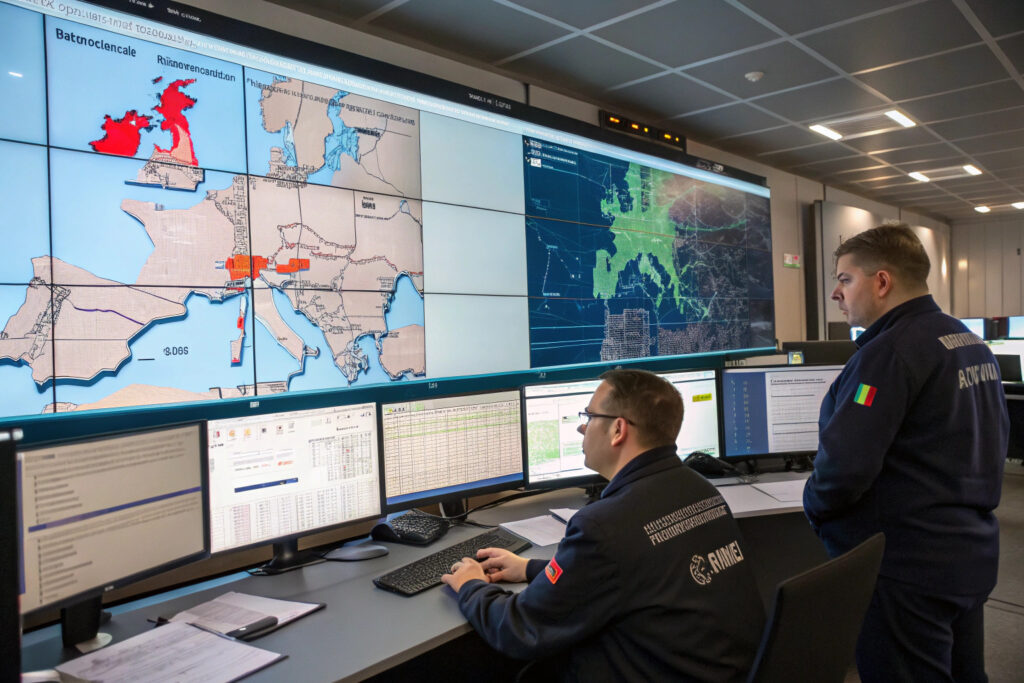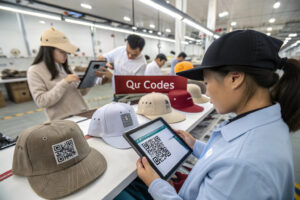The China-Europe Railway Express has emerged as a compelling middle-ground shipping solution between expensive air freight and slow sea transport, particularly for medium-value goods like headwear. For hat manufacturers and retailers, this rail option offers a unique balance of cost efficiency and transit time that can significantly enhance supply chain flexibility. However, navigating the rail shipping process requires understanding specific documentation, container requirements, and routing options.
Shipping hats via China-Europe Railway Express involves booking container space through licensed forwarders, preparing specialized documentation, meeting packaging requirements for rail transport, and understanding the unique characteristics of different rail routes. The process typically takes 18-22 days from Chinese departure to European arrival, costing approximately 40-50% less than air freight while being 60-70% faster than sea shipping.
Proper utilization of China-Europe rail requires understanding both its advantages and limitations for headwear products, particularly regarding temperature sensitivity, security considerations, and customs processing specific to rail transport.
What Are the Key China-Europe Rail Routes for Headwear?
The China-Europe Railway network comprises multiple routes with different characteristics, transit times, and destination options. Understanding these route variations helps in selecting the optimal path for hat shipments based on final destination and timing requirements.
Major routes include the Northern Corridor through Russia, the Middle Corridor through Kazakhstan, and the Southern Corridor through Turkey, each offering different transit times, cost structures, and reliability metrics for headwear shipments.
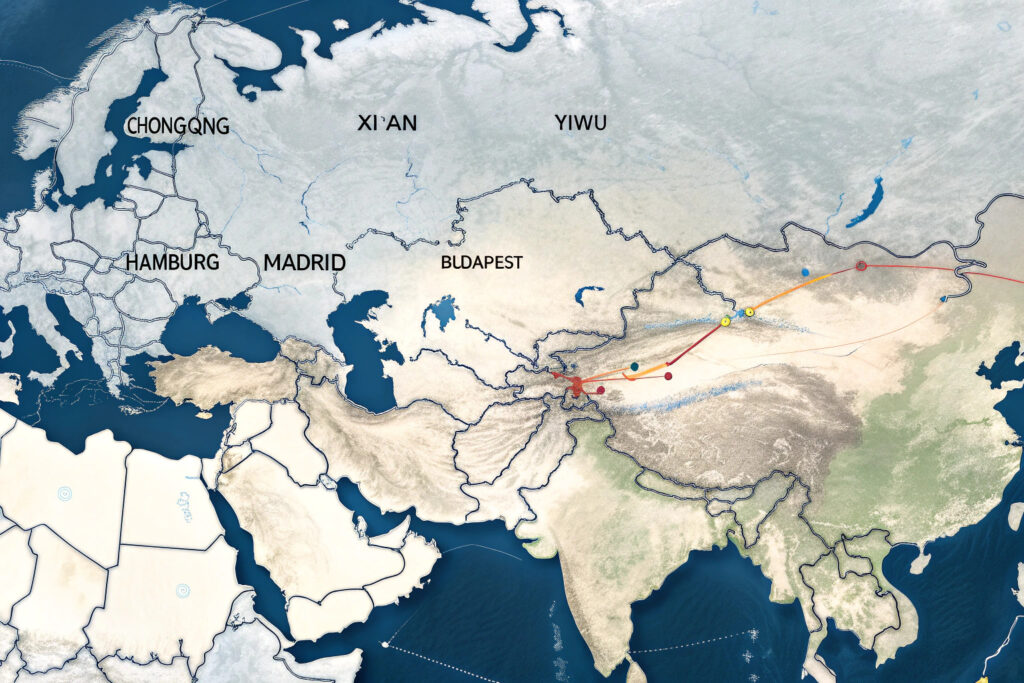
Which Departure Hubs Offer the Best Headwear Services?
Different Chinese departure cities have developed specialized capabilities for various product categories. Selecting the right departure hub can significantly impact shipping efficiency and cost for hat shipments.
We utilize departure hubs with headwear expertise:
- Yiwu Station: Excellent for small to medium hat shipments with consolidation services
- Chongqing Station: Ideal for larger container loads with frequent departures
- Xi'an Station: Optimal for central and western Chinese manufacturers
- Zhengzhou Station: Best for central Chinese production clusters
- Chengdu Station: Growing hub for southwestern manufacturers
According to China Railway Container analysis, Yiwu and Chongqing stations handle approximately 60% of textile and apparel rail shipments to Europe. Our hub selection service matches clients with the most appropriate departure points based on their manufacturing locations and European destination requirements.
What European Destinations Are Most Efficient for Hat Distribution?
European arrival stations vary in their customs efficiency, distribution connectivity, and handling capabilities for textile products. Strategic destination selection can reduce final delivery times and costs.
We recommend arrival stations including:
- Hamburg, Germany: Excellent customs efficiency and central European distribution
- Madrid, Spain: Optimal for southern European markets
- Budapest, Hungary: Growing hub for Eastern European distribution
- Lodz, Poland: Cost-effective for central European markets
- Duisburg, Germany: Largest European hub with extensive connections
The European Rail Terminals Association confirms that Hamburg and Duisburg process textile shipments 25-30% faster than smaller terminals. Our destination optimization considers both terminal efficiency and final delivery requirements to minimize total transit time and cost.
What Documentation Is Required for Hat Shipments?
Rail shipping requires specific documentation that differs from both air and sea transport. Proper documentation preparation is crucial for avoiding customs delays and ensuring smooth transit.
Essential documentation includes commercial invoices, packing lists, railway bills, certificates of origin, and specific textile declarations required for hat shipments to European markets.
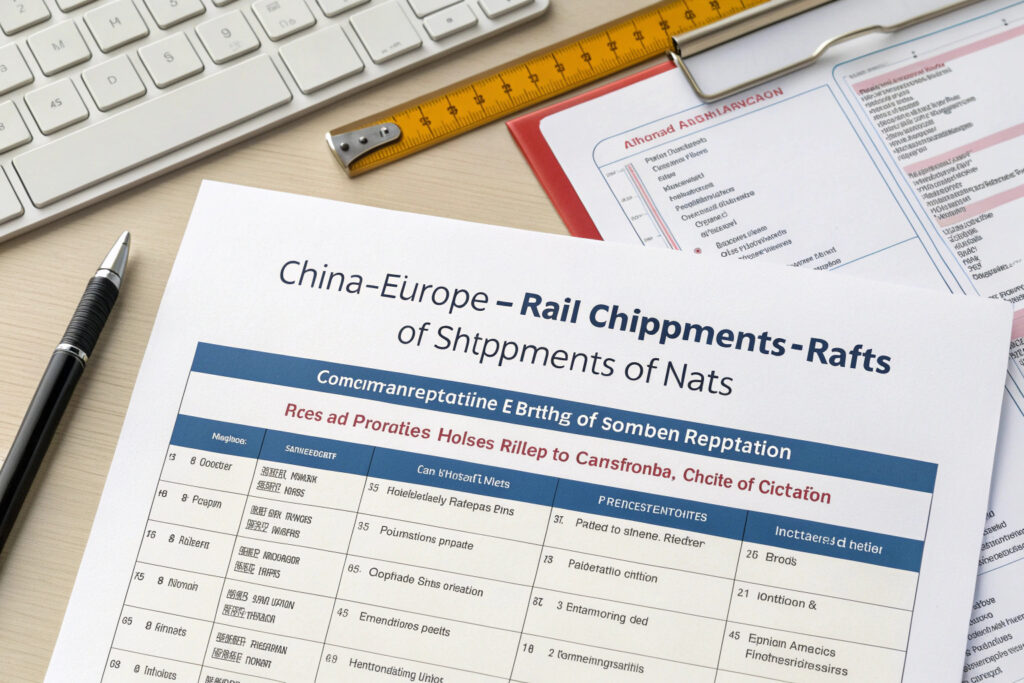
How Do Railway Bills Differ from Other Transport Documents?
The CIM/SMGS railway consignment note serves as both transport contract and cargo receipt for China-Europe rail shipments, with specific requirements that differ from ocean bills of lading or air waybills.
We ensure proper railway bill preparation through:
- Accurate commodity descriptions specifically for headwear products
- HS code verification for correct customs classification
- Weight and volume precision critical for rail container optimization
- Routing information completeness including all transit countries
- Special instructions for temperature-sensitive hat materials
The International Rail Transport Committee provides detailed guidelines for proper CIM/SMGS completion. Our documentation specialists have extensive experience with headwear-specific requirements for China-Europe rail shipments.
What Textile-Specific Declarations Are Required?
Hat shipments to Europe often require additional declarations beyond standard commercial documentation, particularly for materials subject to textile regulations or sustainability claims.
We manage textile-specific requirements including:
- Textile category declarations for customs classification
- Material composition verification for blended fabrics
- Recycled content certification when applicable
- OEKO-TEX or similar certifications for safety claims
- Country of origin documentation for preferential treatment
According to EU Textile Import Regulations, proper documentation can reduce customs processing time by 40-50% for textile products. Our compliance verification service ensures all hat shipments meet European regulatory requirements before departure.
How Should Hats Be Packaged for Rail Transport?
Rail transport presents unique packaging challenges compared to air or sea shipping, particularly regarding compression, moisture protection, and security. Proper packaging ensures hats arrive in perfect condition despite the longer transit time.
Optimal rail packaging combines moisture protection, compression resistance, security measures, and efficient container utilization that maximizes cost efficiency while protecting product quality.

What Moisture Protection Is Essential for Rail Shipping?
Rail containers experience significant temperature variations during the 18-22 day transit, creating condensation risks that can damage hat materials and packaging.
We implement comprehensive moisture protection including:
- Desiccant packs strategically placed throughout shipments
- Vapor barrier bags for premium or sensitive hat styles
- Moisture-resistant corrugated for outer packaging
- Silica gel containers for container-level protection
- Humidity indicator cards for condition monitoring
The Rail Transport Packaging Institute recommends moisture protection capable of handling humidity fluctuations from -20°C to +45°C. Our packaging specifications are specifically designed for the environmental conditions encountered during China-Europe rail transit.
How Can Container Space Be Optimized for Hats?
Hat packaging must balance protection with space efficiency to maximize cost-effectiveness of rail shipping. Strategic packing approaches can increase container utilization by 15-25% compared to standard methods.
We optimize container space through:
- Nesting packaging designs that utilize hat shape efficiently
- Compression-resistant cartons maintaining structure under weight
- Strategic void filling preventing movement without wasting space
- Stacking pattern optimization for different hat styles
- Container loading software that maximizes space utilization
According to Container Optimization Research, proper hat packaging can increase container capacity by 20-30% compared to standard approaches. Our packaging engineering service develops custom solutions for different hat styles and quantities.
What Are the Cost and Timing Considerations?
China-Europe rail shipping offers a unique cost-time balance, but understanding the full cost structure and timing variables is essential for accurate planning and budgeting.
Cost considerations include base freight rates, container sharing options, fuel surcharges, and customs fees, while timing factors involve departure frequency, transit reliability, and seasonal variations.
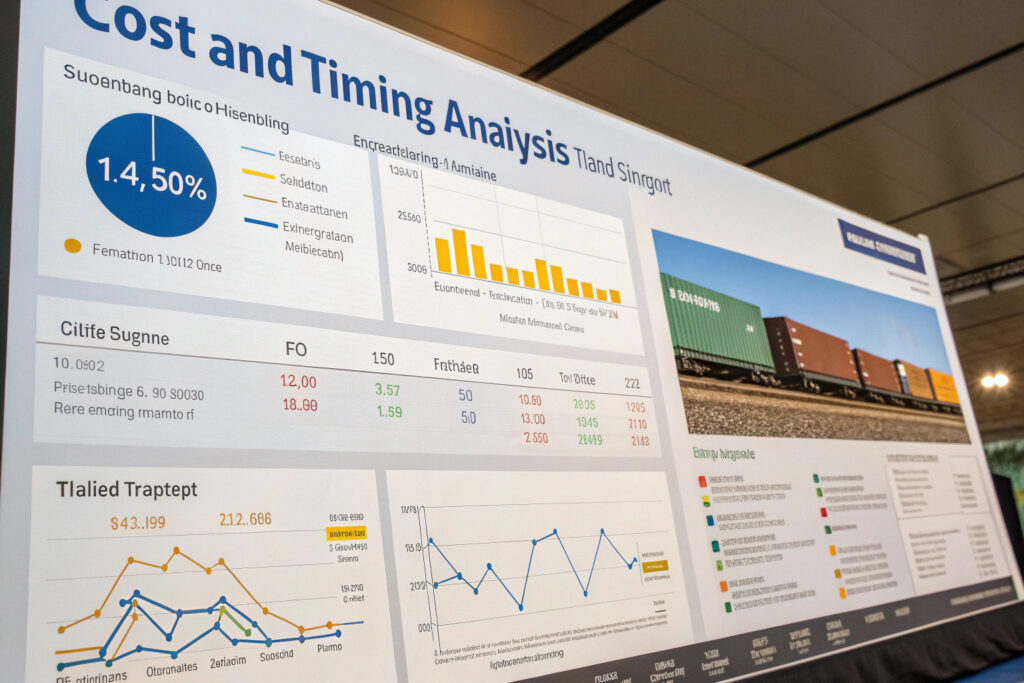
How Do Rail Costs Compare to Other Transport Modes?
China-Europe rail typically costs 40-60% less than air freight and 20-40% more than sea shipping, but the total cost analysis must include inventory carrying costs and market timing considerations.
We provide comprehensive cost analysis including:
- Base freight rates per container or shared container options
- Fuel adjustment factors that vary monthly
- Terminal handling charges at both origin and destination
- Customs clearance fees specific to rail transport
- Inventory carrying cost savings from faster transit versus sea
The Intermodal Transport Economics Institute confirms that rail offers the optimal balance for goods valued between $15-50/kg, which includes most hat product categories. Our modal analysis service helps clients select the most cost-effective shipping method based on their specific hat values and timing requirements.
What Seasonal Factors Affect Rail Shipping?
Rail capacity and pricing experience significant seasonal variations that impact both availability and cost. Understanding these patterns helps in planning and negotiating favorable terms.
We navigate seasonal considerations including:
- Chinese New Year capacity crunch requiring advanced booking
- European holiday season surge affecting autumn shipments
- Winter operational challenges potentially extending transit times
- Peak manufacturing seasons increasing competition for space
- Political event impacts on border crossing efficiency
According to Rail Capacity Analytics, booking 8-10 weeks before Chinese holidays can secure 25-30% better pricing and guaranteed space. Our seasonal planning service helps clients avoid peak surcharges and capacity constraints through strategic scheduling.
How Can You Ensure Supply Chain Visibility?
Maintaining visibility throughout the rail journey is crucial for inventory planning, customer communication, and problem identification. Modern tracking technologies provide unprecedented visibility into China-Europe rail shipments.
Supply chain visibility encompasses container tracking, customs status monitoring, condition monitoring, and estimated time of arrival precision that enables proactive supply chain management.
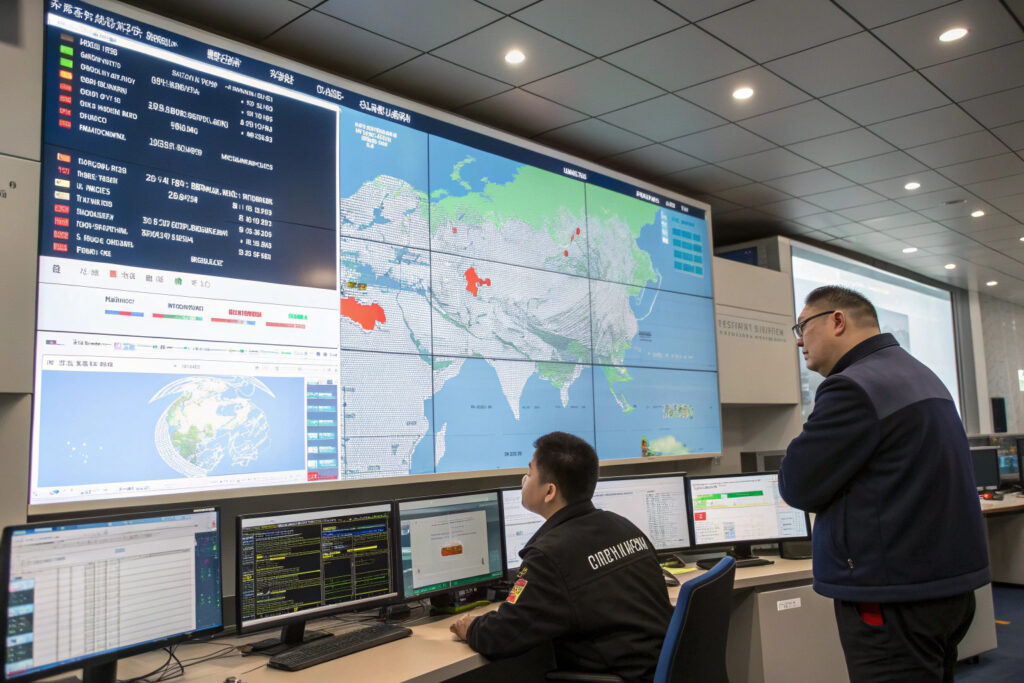
What Tracking Technologies Provide Real-Time Visibility?
Modern rail containers incorporate advanced tracking technologies that provide detailed shipment information throughout the transit from China to Europe.
We utilize comprehensive tracking including:
- GPS container tracking with real-time location updates
- Smart seal technology monitoring container integrity
- Temperature and humidity sensors for sensitive materials
- Border crossing alerts indicating customs progress
- Predictive analytics estimating arrival times with 90%+ accuracy
The Smart Container Alliance reports that advanced tracking can reduce uncertainty in arrival times by 70-80%. Our visibility platform provides clients with real-time access to shipment status and automated alert systems for potential delays.
How Can Visibility Data Improve Supply Chain Management?
The data generated from rail tracking enables proactive supply chain management rather than reactive problem-solving. This data-driven approach transforms rail shipping from a black box to a transparent, manageable process.
We leverage visibility data for:
- Inventory optimization adjusting safety stock based on transit reliability
- Customer communication providing accurate delivery updates
- Performance analysis identifying consistent bottlenecks
- Carrier evaluation comparing different rail operators
- Continuous improvement refining processes based on data insights
According to Supply Chain Visibility Research, proper visibility implementation can reduce buffer stock requirements by 15-25% while improving customer satisfaction. Our data analytics service helps clients transform tracking data into actionable business intelligence.
Conclusion
Shipping hats via China-Europe Railway Express offers an optimal balance of cost efficiency and transit time for headwear companies serving European markets. The 18-22 day transit time at 40-50% of air freight costs makes rail particularly attractive for medium-value hat shipments where inventory carrying costs and market timing matter.
Success with China-Europe rail requires understanding route options, documentation specifics, packaging requirements, and seasonal patterns. Proper planning and execution can make rail shipping a reliable, cost-effective component of your headwear supply chain strategy.
Ready to explore China-Europe rail shipping for your hat business? Contact our Business Director Elaine to discuss how our rail logistics expertise can optimize your European supply chain. Her email is elaine@fumaoclothing.com. Let's build a faster, more cost-effective shipping strategy for your headwear products.
